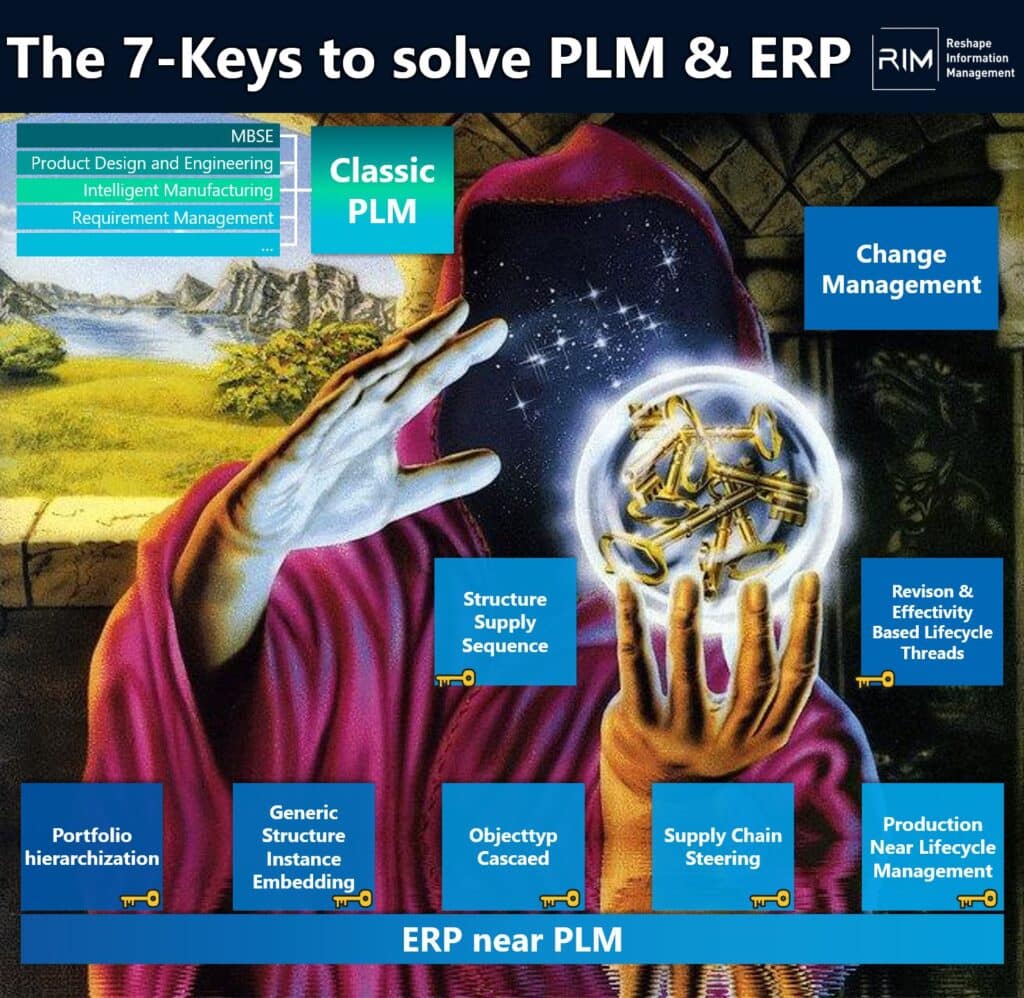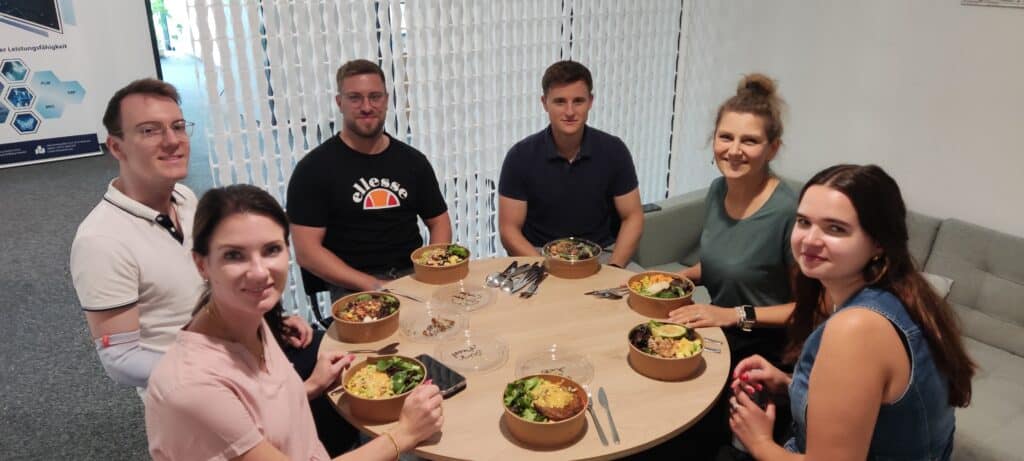In conversation with Professor Dr.-Ing. Jörg W. Fischer on the subject of increasing productivity
Professor Fischer, the topics of product lifecycle management (PLM) and information management, product engineering process (PEP) and digital factory have shaped your work for more than a decade - a long time for a fast-moving industry like ICT. Which developments would you describe as milestones in this area?
In the last 10 years, there have been an incredible number of developments that have had a major impact on the industry. First and foremost is the development of PDM (Product Data Management) to PLM (Product Lifecycle Management). If PDM was only about managing CAD data, the PLM idea is to manage all product data throughout their lifecycle.
Today, the IT platforms that make this possible are available to us as a matter of course. An important milestone was also the development of the Digital Mock Up (DMU), i.e. the possibility of making a digital product prototype available in 3D long before the real prototype. The same was achieved for the factory at the same time. A further step was to make this DMU available for different types of simulation in order to make reliable prospective statements about the future behavior of the product and factory, which in terms of quality far exceed the previously available simulation methods.
In the last 2-3 years, an enormous amount has happened, driven by the idea of Industry 4.0. What I am particularly pleased about is that many smaller companies are at the forefront of this development. At this point, I would like to highlight two developments. We currently have the problem that digital models and reality are diverging over time. The painstakingly built digital models therefore quickly become useless as the plants are operated. In order to realize the automatic comparison between real plant and virtual model, one of our partners, IPO.Plan GmbH, has developed a great technology: With the IPO.Eye, they provide a robot that can autonomously drive through a plant, scan the current situation in the plant and thus update the digital model. This is a technology to be able to carry out ad hoc simulations accompanying production in the future.
The second development to be mentioned is the virtual machine tool. With the technology available today, it is possible for machine tool manufacturers to deliver a virtual machine in addition to the real machine. These are driven by the same control system, so their behavior is almost identical. The fact that even smaller machine tool manufacturers, such as our partner ELHA, do this as a matter of course is a great sign of their innovative strength.
Increasing productivity driven by cost and competitive pressures is an important part of most corporate strategies today. What role do PDP and PLM play in this? What should medium-sized companies in particular pay more attention to in this context?
In recent years, companies have invested a great deal of effort in avoiding waste and streamlining the flow of materials. For every material flow, there is also an information flow. It is interesting that the topic of waste has not played a role in the flow of information to date. The increasing IT penetration of the PDP will further increase the amount of product information to be handled. What will be required of companies in this regard far exceeds what we know today. Up to now, attempts have often been made to solve this problem purely technically, e.g. by means of a PDM system. The design of the product creation in the sense of an organizational rationalization is excluded and the grown processes are kept, which is of course not really effective.
The lean design of the PEP is absolutely essential when introducing or further developing it in PLM. It is important to understand this as a real opportunity for organizational rationalization and to implement it in a targeted manner in the sense of a continuous improvement process. Medium-sized companies should realize that investments in lean management will pay off above all if the lean management idea is also transferred to product creation. This is where companies need help.
Our Steinbeis Transfer Center Computer Application in Mechanical Engineering has achieved a breakthrough in this regard: With the Do(PLM)Con method we developed, we can make the current state of information development in the product lifecycle transparent for all those involved, free of complicated IT terminology, and identify the existing problems. Based on this, we then develop the target process with our customers and accompany them in its implementation.
It goes without saying that meeting customer requirements has a significant influence on product success. It is important to increase the documentation quality in requirements management and to avoid errors due to misinterpretation. You have been involved in the development of PLM-integrated requirements management that helps to solve this problem. Give us a brief insight into this tool!
For companies today, the ability to quickly transform a good idea into a successful product is a crucial success factor. Innovation should not be an accident. Considering that, according to experts, 50% of product launches are unsuccessful, one naturally has to ask what the reason for this is. Obviously, many companies fail to transform market requirements into their product and its components. Requirements pass through different levels of abstraction during product development. This refinement process takes place across departmental and company boundaries. In the process, the requirements have to be verbally formulated, explained and discussed again and again.
Each of these transformation steps carries a risk of misinterpreting requirements or losing their context. Here we asked ourselves whether it would not be possible to develop a methodical approach that could eliminate the problems mentioned, could be easily implemented on the basis of the system functionalities of the Teamcenter PLM system from Siemens, and was also close to the intuitive approach of the engineers. We have succeeded in doing this with the SITIO method (Securing Information Transformation for Input and Output). Our transfer center offers its customers a corresponding consulting service for the introduction and we notice a great interest in these topics in the market.
Professor Fischer, you have been working for a year at the Steinbeis Transfer Center for Computer Applications in Mechanical Engineering, which was founded 30 years ago by Prof. Dr.-Ing. His services range from consulting to the implementation/adaptation of PLM components. Can you identify a trend in the direction in which your customers' tasks and requirements are developing?
Currently, three main trends can be identified from our discussions on the market. Many companies have introduced successful PLM components and thus successfully automated some routine processes. However, this also makes them aware of many weaknesses in their processes.
More and more frequently, our customers are asking how the PDP can be made consistently lean. Another trend is the shift from Engineering to Order (ETO), i.e. customer order-specific production, to Configure to Order (CTO). Many companies are actively working on modularizing their products coupled with the introduction of suitable configuration systems. The aim is to be able to offer customers configurable products that meet individual customer requirements, but which consist to a large extent of combinable standard modules. This often enables the company to evolve from workshop or island production to line production and brings with it a reduction in complexity as well as high savings potential in product development and production. It should be borne in mind that modularization cannot be solved without a suitable methodology and an organization that thinks in modular terms.
Another trend is the increasingly intensive discussion of how PLM systems and ERP systems are positioned in relation to each other. At the boundary of these systems, the strictly formal processes of enterprise resource planning meet the technological, innovative process of product creation. Here, the question is discussed to what extent the approach of understanding PLM as an appendage of ERP, which is widespread in medium-sized companies, does not hinder the innovative process through the associated system-related formalization. The innovative process needs flexibility and freedom! In the future, the PLM platform must increasingly act as an active working environment that guesses what we want to do and supports us in doing it. People will then be at the center and orchestrate the creative process without wasting their time on tedious formal tasks.
Share with us here Please share your thoughts on this article and let's discuss - how do you think productivity can be increased?




